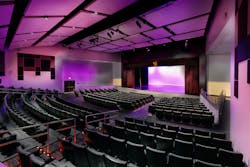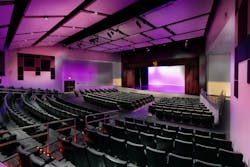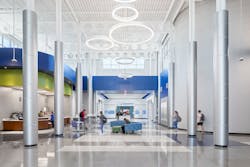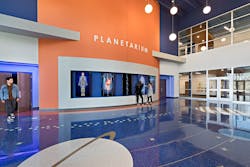The Covid-19 pandemic has led to a drop in public school enrollment. Student numbers fell by 3% nationwide in the 2020-21 school year compared with 2019-20, according to the National Center for Education Statistics. At the same time, people’s confidence in public schools also has declined. Recent Gallup polls say only 32% of people have “quite a lot” of confidence in the school system; in 2020, that number was 41%.
As they emerge from more than two years of pandemic-related disruption, schools must find new ways to bring people together by engaging their local communities, and in doing so, gain back institutional confidence.
School systems can reap several benefits from investing in facilities. A well-designed facility that taps into community engagement as a resource can have a positive influence on both staff retention and student enrollment.
Facilities can be designed to accommodate innovative educational experiences that community members and local businesses can engage with after school hours. When schools leverage these facilities and maximize their use, the long-term value outweighs the initial costs and construction disruptions.
Community support is a two-way street
Community-oriented facilities not only improve the curriculum and educational experiences of students, but also create new opportunities for the community to support the school. For instance, one of the amenities included when Fairforest Middle School in Spartanburg, N.C., opened a new campus in 2019 was a 108-seat planetarium. The new facility enhances the STEM-based school’s astronomy, science and social studies curriculum.
Fairforest Middle also provides opportunities for the community to take advantage of the planetarium during after-school events. The proceeds from ticket sales support the operational costs of the planetarium, and families, local businesses and community groups are able to use Fairforest Middle to enrich their own lives.
Extracurricular opportunities
Incorporating community-oriented facilities into schools has clear benefits for students. The variety of ways that districts encourage community use of these facilities can alleviate expenses, foster public/private partnerships, and engage the public at large.
Performing arts centers are another type of venue that can easily be made available for community use. These facilities can be built or upfitted to accommodate outside attractions like touring musical and theatrical productions. Students are given an opportunity to observe trained professionals up close; many touring groups are happy to host student-centric previews or learning experiences prior to an evening performance.
School district athletic facilities also can provide greater connection to the community. In addition to hosting district sporting events, athletic facilities with ample capacity can host conference and statewide tournaments. The proceeds from these events can be used to support student programs. These ideas are not new, but designing a facility with both internal and public uses in mind is key to getting the most value from a school venue.
Worker training
Workforce development and vocational training programs provide additional ways for public school systems to establish and enhance community connections. In Anderson, S.C., the Anderson Institute of Technology (AIT) bolsters its facilities and programs through partnerships with companies like Michelin that provide facility upgrades in exchange for recruitment access to the trained student workforce. Since the start of the partnership in 2019, Michelin has trained more than 30 AIT students through a youth apprenticeship program and welcomed more than 20 students as full-time employees after they completed the program.
Corporate sponsorships are an excellent way for schools to provide or maintain the latest technology and professional-level equipment for student use in exchange for naming rights or internship programs.
These partnerships work best when clearly defined operating agreements are in place. It’s important to create a structure that allows private entities to use school facilities in certain capacities in exchange for staffing assistance or financial support. But the school systems must take steps to ensure that student safety and access never is compromised.
If schools are progressive and intentional in designing their facilities, strategic partnerships will come naturally. Large events, tournaments, conferences and other events will spike the demand for unique and attractive venues.
Benefiting the entire community
Community-oriented educational amenities are uniquely poised to enrich student learning experiences and the culture of the surrounding communities.
Administrators should seek out opportunities to use pre-existing assets wisely. Feasibility studies can determine whether renovation of existing assets or new construction will create the best chance for a positive result.
Through thoughtful design and planning, education systems can ensure their facilities support the operations of schools without straining budgets or resources. These facilities can become community hubs — enriching camaraderie among community members with activities that bring people together.
About the Author
Ben Thompson
principal, K-12 Studio director, McMillan Pazdan Smith Architecture
Ben Thompson, AIA, ALEP, leads McMillan Pazdan Smith’s K-12 Studio. Ben understands that education empowers students to become future leaders, creators and collaborators. His work focuses on providing unique solutions to support student outcomes through the programming, master planning, design and project management process. He can be reached at [email protected]



